Why health and price, not sustainability, drive US meat consumption choices
Powered by WPeMatico
Powered by WPeMatico

A viral Instagram reel claims that Putting Alcohol On Neck can Make Your Cough Disappear. This claim by the Instagram user is False
In a viral Instagram reel, it is claimed that Putting Alcohol alcohol on neck can make your cough disappear. The reel by user letsmakeez is titled “When did you learn that alcohol can make your cough disappear?” and features a woman applying alcohol to a cloth and wrapping it around her neck. “If coughing so much and don’t know what to do. Do that, and you will see the coughing going away. If you 0ut some alcohol in a cloth and put it around your neck, it will make the cough reduce a lot. I remember my mother doing that when I was younger!” The reel has 50,002 likes and can be accessed here.
The claim by Instagram user that Putting Alcohol On Neck can Make Your Cough Disappear is False. Consuming alcohol might help suppress a cough, but applying it to the neck won’t make the cough disappear.
A cough is an involuntary reflex action. When irritants like mucus, germs, or dust affect your throat and airways, your body instinctively reacts by coughing. Just like other reflexes such as sneezing or blinking, coughing serves to safeguard your body.
There are various coughs, each with unique characteristics that can help doctors determine the underlying cause. A cough that produces phlegm or mucus is known as a productive cough and may indicate conditions like pneumonia, bronchitis, or the flu, with mucus color potentially signaling more severe issues. It is important to consult a doctor if the cough produces yellowish-green phlegm or blood. Conversely, a dry or nonproductive cough does not generate mucus.
Coughs are generally classified as either acute or chronic. Acute coughs, which last up to three weeks, are generally the least concerning and often resolve without medical intervention. However, medical attention is advised if accompanied by symptoms like fever, headache, drowsiness, or shortness of breath. Additionally, coughs that produce distinct sounds such as whooping, wheezing, or barking may point to more serious conditions. Chronic coughs, persisting for over eight weeks, can be indicative of serious or long-term lung diseases.
Acute coughs may resolve on their own and disappear, while chronic coughs typically persist and require targeted medical treatment for resolution.
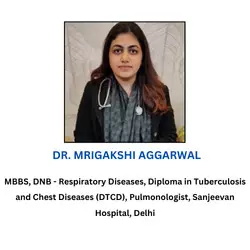
Dr. Mrigakshi Aggarwal, MBBS, DNB – Respiratory Diseases, Diploma in Tuberculosis and Chest Diseases (DTCD), Pulmonologist, Sanjeevan Hospital, Delhi explained, “A cough can often disappear on its own, especially if it’s acute—lasting less than three weeks—typically due to a mild infection or irritant like dust or a cold. The body can often clear these issues with rest, hydration, and simple remedies like warm teas or honey, with over-the-counter medications providing additional relief. However, if the cough becomes chronic, lasting over eight weeks, or is accompanied by symptoms like chest pain, fever, or shortness of breath, consulting a healthcare provider is essential. Chronic coughs may indicate conditions such as asthma, GERD, or infections that require targeted treatment.”
Alcohol contains ethanol, a psychoactive and toxic substance known for its potential to cause dependence. While alcohol has been consumed across many cultures for centuries, its use is associated with considerable health risks and harm.
As per WHO, “Worldwide, 2.6 million deaths were attributable to alcohol consumption in 2019, of which 2 million were among men and 0.6 million among women. The highest levels of alcohol-related deaths per 100 000 persons are observed in the WHO European and African Regions with 52.9 deaths and 52.2 deaths per 100 000 people, respectively.
The data on global alcohol consumption in 2019 shows that an estimated 400 million people aged 15 years and older live with alcohol use disorders, and an estimated 209 million live with alcohol dependence.”
Scientific evidence suggests that moderate alcohol consumption may suppress the cough reflex but increases the risk of lung infections from aspiration. While brief, low-level exposure might benefit airway health by enhancing mucociliary clearance and reducing inflammation, chronic or high alcohol intake disrupts this balance, impairing airway clearance and worsening conditions like asthma and COPD. However, most of the evidence is focusing on consumption or drinking of alcohol. There is no scientific evidence or medical consensus to support the claim that Putting Alcohol On Neck can Make Your Cough Disappear.
Some studies have indicated that alcohol consumption may provide some relief in cases of cough and cold. H. Berkowitz et. al.’s study showed that moderate amounts of ethanol (alcohol) can significantly suppress the cough reflex. Having said that , this study doesn’t mention anything about the complete elimination or disappearance of cough.
While there is positive evidence of consumption of alcohol on impression of cough, there is also Evidence that shows that consuming alcohol in high doses can have harmful effects on lung health. A study by Joseph H Sisson et. al. revealed that alcohol exposure impacts lung airway functions in a concentration and duration-dependent manner. While brief exposure to low concentrations of alcohol may enhance mucociliary clearance and reduce airway inflammation, prolonged and heavy exposure can impair clearance, complicate asthma management, and worsen COPD outcomes.
Similarly, another article published in the American Review of Respiratory Disease found that lifetime alcohol consumption is linked to an increased risk of chronic cough and phlegm but not wheezing. Additionally, alcohol consumption was associated with lower FEV1 levels, indicating a potential impact on lung function. An unexpected interaction suggested that alcohol may have a protective effect on lung function in heavy smokers, warranting further investigation into these complex relationships.
Studies suggest that short-term, low-level alcohol exposure might help relax the airways and slightly suppress the cough reflex. However, they also highlight that excessive alcohol consumption can negatively impact lung health. Importantly, there is no scientific evidence backing the claim that Putting Alcohol On Neck can Make Your Cough Disappear

Responding to the claim Dr Kamal Kant Kohli, MBBS, DTCD, Chest Specialist, New Delhi said, “Although alcohol might feel temporarily soothing due to its warming sensation, it doesn’t help a cough disappear and may even worsen symptoms. Alcohol can irritate the respiratory tract, leading to increased inflammation, and its dehydrating effects may dry out the throat, making a cough more uncomfortable. Also, there are no studies or positive impacts of topical application of Alcohol on the Neck. It cannot make cough disappear. For effective relief, it’s best to focus on proven remedies: stay hydrated, try warm teas with honey, and get plenty of rest. If your cough lasts more than a few weeks, consider consulting a doctor for targeted treatment.”
Dr. Mrigakshi Aggarwal, MBBS, DNB – Respiratory Diseases, Diploma in Tuberculosis and Chest Diseases (DTCD), Pulmonologist, Sanjeevan Hospital, Delhi further explained, “Applying alcohol to the neck to relieve a cough is not supported by medical evidence. While some believe that the cooling effect of alcohol may provide a soothing sensation, this is purely superficial and does not address the underlying cause of a cough. Effective treatment should focus on identifying and managing the root cause of the cough, whether it is due to a viral infection, allergies, or another condition. It’s important to consult a doctor for appropriate diagnosis and treatment rather than relying on unproven remedies.”
Low and short-term alcohol exposure may reduce the cough reflex although it raises the risk of lung infections from aspiration. On the contrary, Lifetime alcohol use is also linked to chronic cough, phlegm, and lower FEV1 levels, showing reduced lung function. Having said this, all the evidence is linked to alcohol consumption. There is no scientific evidence or medical consensus that supports the claim that the topical application or specifically Putting Alcohol On Neck can Make Your Cough Disappear.
Hence, the claim by the Instagram user is False.
Powered by WPeMatico

Noida: Esaote Group, a leading Italian innovator in medical imaging, ultrasound technology, dedicated magnetic resonance imaging (MRI), and healthcare IT solutions, has strengthened its footprint in India with the opening of a new manufacturing facility in New Delhi (B-15, Sector 60, Noida, Uttar Pradesh). The facility, managed by Esaote Asia Pacific Diagnostic Private Limited, will focus on producing a full range of advanced ultrasound systems for the Indian market.
According to the PTI report, the new Esaote manufacturing site will produce – for the Indian market – a full range of advanced ultrasound series – My Lab A, My Lab E series and Compact Portable Ultrasounds – as “Made in India”, which will be marketed shortly after completion of regulatory and quality assurance processes by the relevant local bodies.
These ultrasound systems are the latest results of Esaote’s R&D efforts. They integrate the Augmented Insight functions and provide users with an innovative touchscreen control panel to significantly increase workflow. In addition, they also meet most demanding healthcare professionals’ needs with their compact footprint, battery-operated, lightweight and mobile design.
Also Read:SPMCIL donates Rs 65.77 Lakh Medical Equipment to Kakinada hospitals
The combination of AI-based features and advanced imaging technology will empower Indian healthcare professionals to make confident, informed decisions, ensuring accurate diagnostic outcomes.
For Esaote, the new production plant is a strategic choice to increase its presence in a market with strong growth prospects, where the Italian company has been operating for over 20 years. It also goes hand in hand with the care and empathy with which Esaote approaches its daily work worldwide to improve people’s well-being through technology, inclusion and the promotion of a sustainability culture.
“Consolidating our presence in key markets, where the Esaote brand has been known for many years, through on-site production and the creation of a local supply chain, is part of the international development strategy and reflects the principles of environmental and social sustainability that guide us in our daily actions, in line with the Global Compact,” said Franco Fontana, CEO of Esaote S.p.A.
“What gives us confidence is our innovative spirit, our customer focus, our growth mindset, the Esaote brand and a team that is not afraid to take on the challenges ahead and enjoys creating value for customers and partners. Nothing is more powerful than Esaote Group coming together and writing a new chapter in India with great ‘Italian innovation and Design’ combined with ‘Indian Skills and India Digitalization’,” said Dheeraj Nasa, Country Business Manager Sales APAC Region, news agency PTI reported.
Esaote Group is a leader in medical imaging (ultrasound, MRI and diagnostic process management software). At the end of 2023, the Group had 1,250 employees, half of which are based in Italy. With facilities in Genoa and Florence and its own production and research units in Italy and the Netherlands, Esaote is present in over 100 countries worldwide.
Also Read:AIIMS Delhi to establish Centralised Procurement System
Powered by WPeMatico
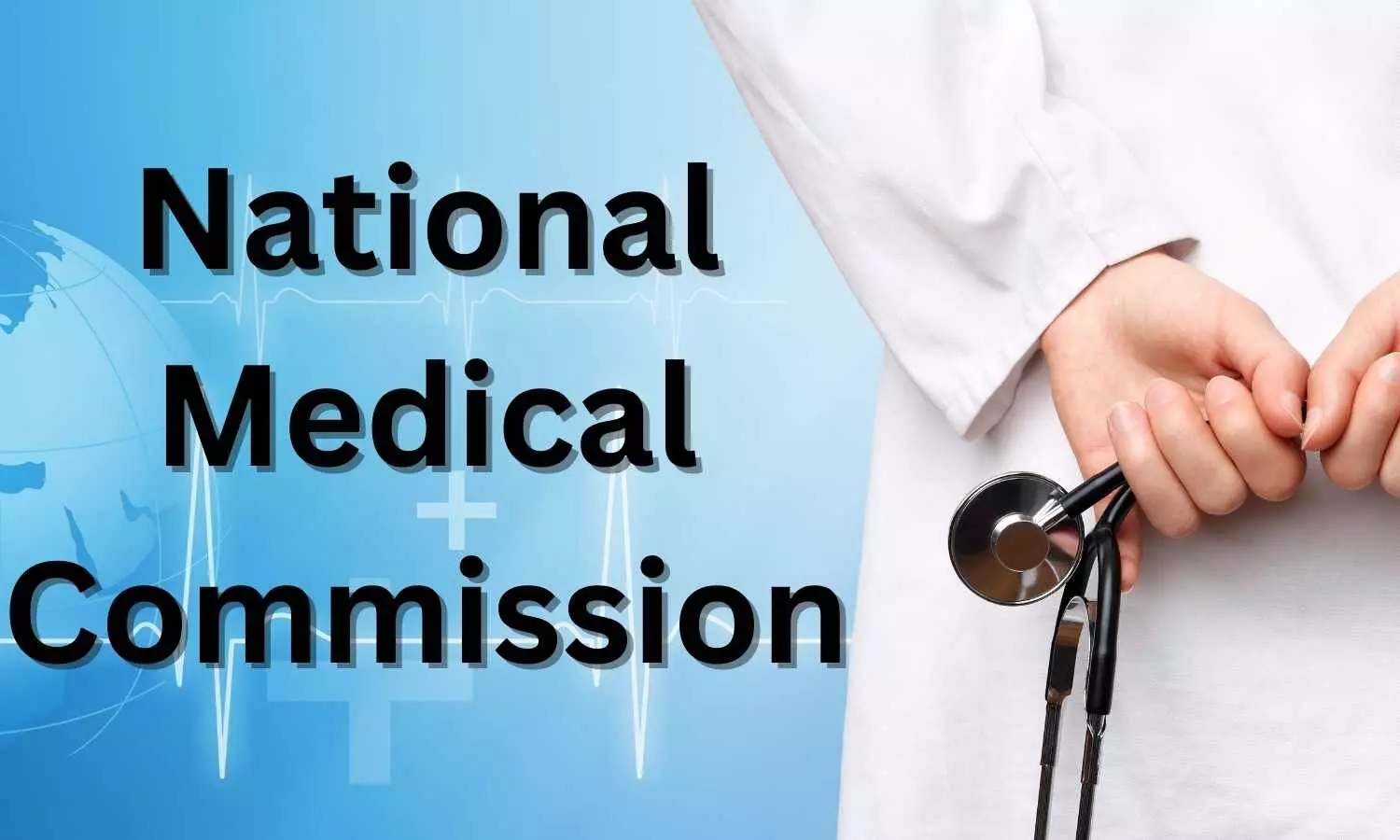
New Delhi: The Medical Assessment and Rating Board (MARB) of the National Medical Commission (NMC) has extended the last date to submit applications to start new Post-Graduate Medical Courses in an established medical institutions, establishing a new Post-Graduate Medical Institution (standalone PG institute) and increase of seats in existing PG medical courses for the Academic Year (AY) 2025-2026).
While previously the last date to receive applications was 17.10.2024, it had later been extended till 08.11.2024 and now MARB has extended it further by two weeks i.e. till 22.11.2024.
Issuing a public notice in this regard on 06.11.2024, the Medical Assessment and Rating Board of the Commission mentioned, “Vide Public Notice of even number dated 18.09.2024 of Medical Assessment and Rating Board (MARB) of National medical commission (NMC), New Delhi, applications had been invited for starting of new Post Graduate medical Courses in an established Medical Institution, establishing a new Post-Graduate Medical Institution (standalone PG Institute) and increase of seats in existing PostGraduate Medical Courses through the web portal for the Academic Year 2025- 2026. The last date of receiving of applications was 17.10.2024. MARB of NMC was previously extended till 08.11.2024 ,videPublic Notice dated 16-10-2024 . Now, MARB of NMC has decided to extend the submission of applications by further two weeks i.e. till 22.11.2024.”
“The other terms and conditions mentioned in the aforesaid Public Notice of even number dated 18.09.2024 shall remain the same,” the Commission clarified.
Medical Dialogues had earlier reported that back in September 2024, NMC had invited applications for starting new post-graduate medical courses in an established medical institution, establishing a new post-graduate medical institution (standalone PG institute) and increase of seats in existing post-graduate medical courses for the Academic Year 2025-2026.
Back then, in the notice dated 18.09.2024, NMC had informed that only online applications could be submitted on the web portal of the official NMC website till 17th October, 2024.
In the notice, NMC had instructed the medical colleges/institutes to upload the following three documents in PDF format in the online application form-
Valid Essentiality Certificate (EC) in the prescribed Proforma for starting of new Post-Graduate medical Courses in an established medical institution, establishing a new Post-Graduate medical institution (standalone PG institute) under the heading/column “Essentiality Certificate”.
Valid Consent of Affiliation (CoA) in the prescribed Proforma, and
Justification for the number of requested seats
The Commission had also clarified that the applications would only be accepted after online payment of the requisite fee through the link generated during the filling of the application.
NMC had also released the guidelines for filling online applications for PG medical courses in the notice dated 18.09.2024 including the online application process, evaluation of application and assessment process, scrutiny and final decision etc. It had also mentioned the fee for various applications/processes effective from 17th November, 2023, and the rate of bank guarantee for PG courses and additional PG medical seats.
To view the NMC notice, click on the link below:
https://medicaldialogues.in/pdf_upload/nmc-notice-dated-06-11-2024-259917.pdf
Powered by WPeMatico

Mumbai: Global pharma major Lupin Limited has announced that the Company has received tentative approval from the United States Food and Drug Administration (USFDA) for its Abbreviated New Drug Application for Raltegravir Tablets USP, 600 mg, to market a generic equivalent of Isentress HD Tablets, 600 mg of Merck Sharp & Dohme LLC.
Lupin is the exclusive first-to-file for this product and may be eligible to receive a 180-day exclusivity. This product will be manufactured at Lupin’s Nagpur facility in India.
Raltegravir Tablets USP, 600 mg are indicated in combination with other antiretroviral agents for the treatment of human immunodeficiency virus (HIV-1) infection in adult patients and in pediatric patients weighing at least 40 kg.
Raltegravir Tablets USP, 600 mg (RLD Isentress HD) had an estimated annual sale of USD 36 million in the U.S. (IQVIA MAT September 2024).
Read also: Lupin Gets CDSCO Panel Nod to Study Antidiabetic FDC
Medical Dialogues team had earlier reported that the Company had received tentative approval from the USFDA under the U.S. President’s Emergency Plan for AIDS Relief (PEPFAR) for its Abbreviated New Drug Application for Emtricitabine and Tenofovir Alafenamide Tablets, 200 mg/25 mg, to market a generic equivalent of Descovy Tablets, 200 mg/25 mg, of Gilead Sciences, Inc.
Read also: Lupin bags tentative USFDA nod for HIV-1 infection drugs
Lupin Limited is a global pharmaceutical leader headquartered in Mumbai, India, with products distributed in over 100 markets. Lupin specializes in pharmaceutical products, including branded and generic formulations, complex generics, biotechnology products, and active pharmaceutical ingredients. The Company has a strong position in India and the U.S. across multiple therapy areas, including respiratory, cardiovascular, anti-diabetic, anti-infective, gastrointestinal, central nervous system, and women’s health. Lupin has 15 state-of-the-art manufacturing sites and 7 research centers globally.
Powered by WPeMatico
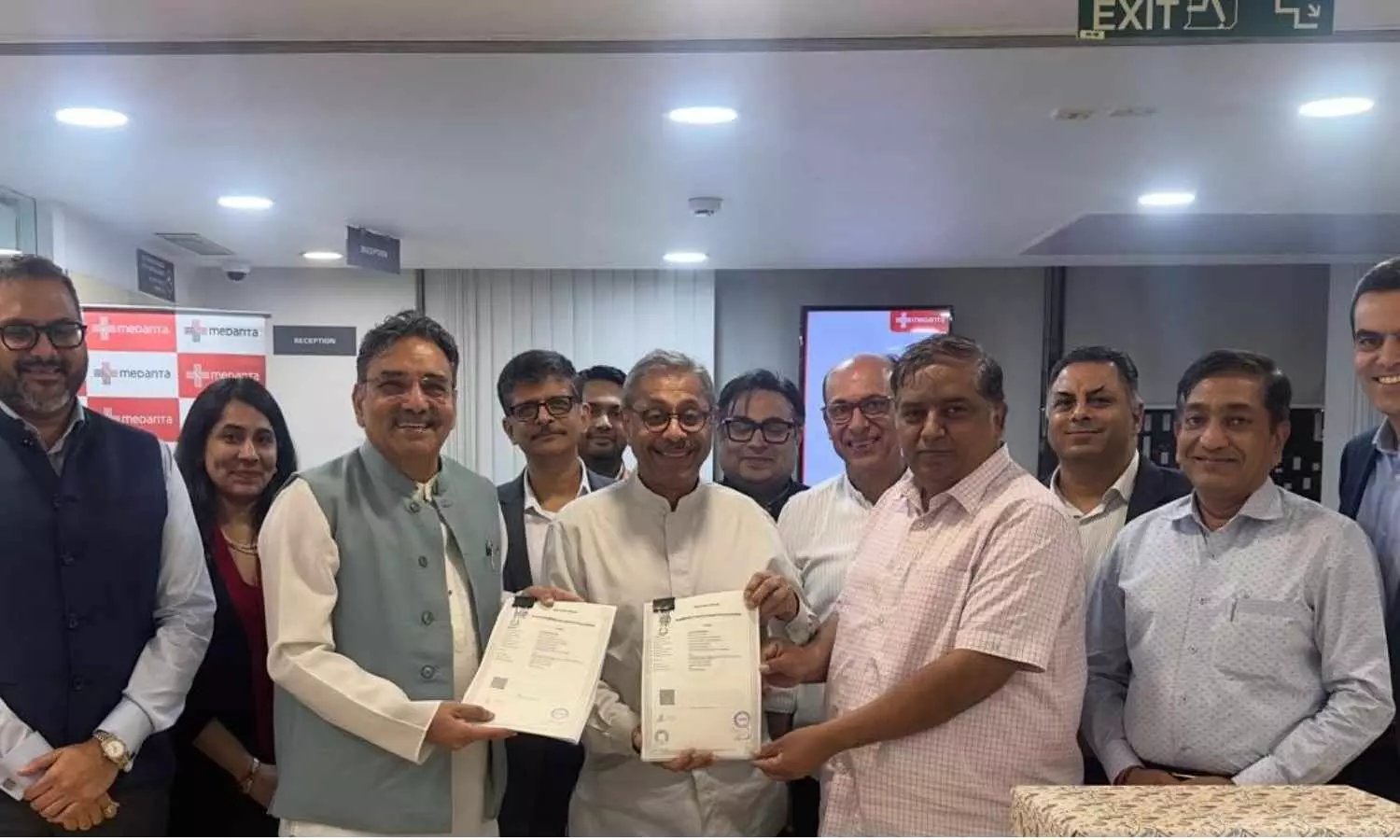
New Delhi: Global Health Limited (NSE: Medanta, BSE: 543654), one of the largest private multi-specialty tertiary care providers operating in the North and East regions of India, announced that the Company has signed an Operations and Management Agreement with Dr Narayan Dutt Shirmali Foundation International Charitable Trust Society (”Society”) to operate and manage a 750 bed super specialty hospital in Pitampura, New Delhi.
The hospital is expected to commence operations in 4 years, subject to necessary statutory and customary approvals.
As per the agreement, the hospital building and associated civil infrastructure will be developed by the Society and Medanta will make the necessary investments in internal fitouts, MEP, furniture and medical equipment. Medanta is expected to incur a project capex of ~Rs. 600 crores in next 3-4 years, to be funded by a combination of internal accruals and debt financing.
Also Read:Four Medanta Doctors on Stanford’s Global Top 2% Scientists List
Medanta will have full control over the day to day running of the hospital. The agreement is for an initial term of 30 years, further extendable on mutually agreeable terms.
The hospital will be located on a 7-acre site in Pitampura, New Delhi, with a total built-up area of 7.6 Lakh sq.ft excluding the basement. The site offers good connectivity to the Outer Ring road and is in close proximity to high-density residential areas, which will enable Medanta to serve the region’s growing healthcare needs.
The state-of-the-art ~750 bedded super-specialty hospital will cater to over 30 super specialties including cardiac, neurosciences, cancer, orthopaedics, digestive, hepatobiliary sciences, multispecialty robotic surgeries, regenerative medicine, as well as full range of transplants.
Commenting on the development, Dr Naresh Trehan, Chairman & Managing Director, Medanta, said, “We are thrilled to expand our footprint in New Delhi by entering into an O&M agreement to operate and manage a ~750 bed super-speciality hospital in Pitampura. This large scale format hospital aligns with our commitment to providing high-quality quaternary care and will allow us to serve communities in Delhi for decades to come.”
“This strategic expansion reinforces our vision to build a sustainable and high-standard healthcare delivery platform. By securing this O&M agreement, we are strengthening our presence in Delhi/NCR and reaffirming our dedication to elevating patient care in the region through world-class services and facilities.” added Pankaj Sahni, Group CEO and Director.
Also Read:Medanta achieves National Recognition as Active Emerging Lung Transplant Centre in North India
Powered by WPeMatico

Researchers have found that while rosuvastatin and atorvastatin are two of the most commonly prescribed drugs in managing cholesterol, rosuvastatin may offer some additional benefit over atorvastatin in the context of reducing all-cause mortality. A recent study was conducted by Zhou and colleagues published in the journal Annals of Internal Medicine. This study fills this gap by comparing the outcome of patients who were exposed to rosuvastatin and atorvastatin in two large databases: the China Renal Data System (CRDS) and UK Biobank (UKB).
The aim of the study was to compare the real-world effectiveness and safety profiles of rosuvastatin and atorvastatin, with a focus on all-cause mortality, major cardiovascular events, and statin-related adverse effects. This was an active comparator cohort study utilizing the target trial emulation research approach. The latter emulates the design of a randomized controlled trial. This study included data from 285,680 adults newly prescribed rosuvastatin or atorvastatin within the CRDS and UKB databases. To limit selection bias, 1:1 multilevel propensity score matching was applied to harmonize characteristics between the two patient groups. After this matching, Cox proportional hazards regressions were used to estimate the primary outcome of all-cause mortality as well as any other adverse events.
At six years’ threshold, 2.57 per 100 person-years and 0.66 per 100 person-years seemed to contrast with 2.83 per 100 person-years and 0.90 per 100 person-years based on the studies of the CRDS database and the UKB database, respectively.
These corresponded to CI reductions of -1.03% (95% CI, -1.44% to -0.46%) for the CRDS dataset and -1.38% (95% CI, -2.50% to -0.21%) in the UKB dataset.
The rosuvastatin group also had lower rates of major adverse cardiovascular events and adverse liver outcomes in both the databases, hence a slight edge in protecting heart and liver conditions.
Patients on rosuvastatin were at a higher risk of type 2 diabetes mellitus compared to that of patients on atorvastatin, with the patients at risk, it would be a problem.
The findings appear to indicate that although rosuvastatin has an edge over atorvastatin regarding a slight mortality benefit, the absolute differences were mostly small. This study contributes to the continuing evaluation of statin alternatives, providing health care professionals with information on slight differences between rosuvastatin and atorvastatin. For patients with a specific risk profile, like heightened susceptibility to diabetes, these results may be able to guide decisions on individualized therapy.
Reference:
Zhou, S., Chen, R., Liu, J., Guo, Z., Su, L., Li, Y., Zhang, X., Luo, F., Gao, Q., Lin, Y., Pang, M., Cao, L., Xu, X., & Nie, S. (2024). Comparative effectiveness and safety of atorvastatin versus rosuvastatin: A multi-database cohort study. Annals of Internal Medicine. https://doi.org/10.7326/m24-0178
Powered by WPeMatico
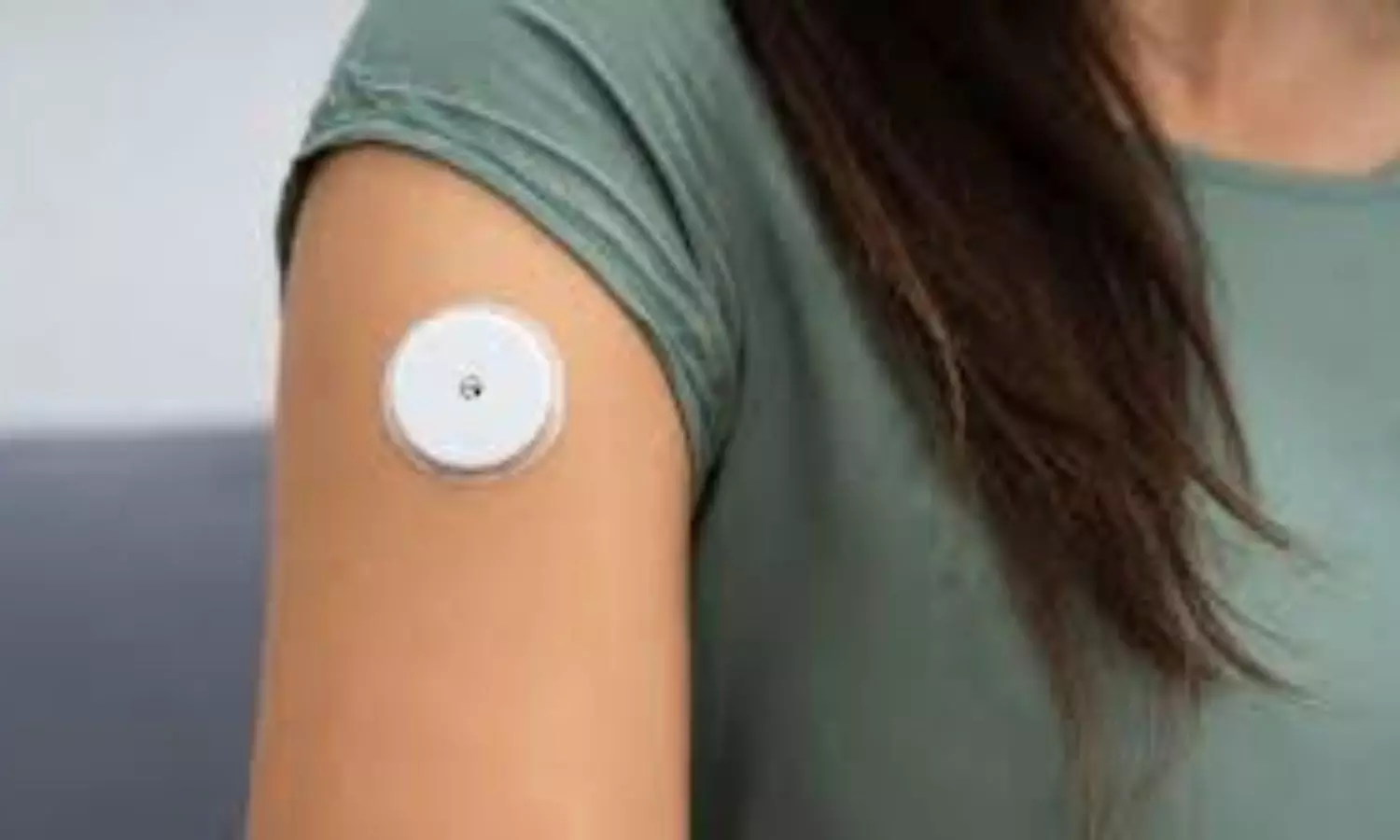
USA: A recent study published in Diabetes Technology & Therapeutics has highlighted the advantages of integrating FreeStyle Libre continuous glucose monitoring with GLP-1 receptor agonist (RA) therapy in adults with suboptimally controlled type 2 diabetes (T2D). The findings indicate that this combination approach significantly improves glycemic control compared to GLP-1 therapy alone.
Glucagon-like peptide-1 receptor agonist (GLP-1 RA) therapy offers significant glycemic benefits for individuals with type 2 diabetes. However, the impact of combining GLP-1 RA therapy with FreeStyle Libre systems (FSL) has not been previously explored. To address this gap, Eugene E. Wright, Abbott, Sylmar, California, USA, and colleagues aimed to compare changes in hemoglobin A1c (HbA1c) levels between individuals receiving GLP-1 therapy alongside FSL (GLP-1+FSL) and those receiving GLP-1 therapy alone (GLP-1).
For this purpose, the researchers utilized Optum’s de-identified Market Clarity Data, a linked electronic health records (EHR)-claims database. The study included adults with T2D and HbA1c levels of 8% or higher who started their first GLP-1 RA medication between 2018 and 2022. Participants in the GLP-1+FSL group initiated their first FreeStyle Libre system within ±30 days of starting their first GLP-1 medication.
The cohorts were matched in a 1:5 ratio based on baseline insulin therapy, age, sex, baseline HbA1c, and the type of GLP-1 RA. Changes in HbA1c were then compared between unmatched and matched groups at the six-month mark.
The study led to the following findings:
In the real-world, retrospective observational study, adults with suboptimally controlled type 2 diabetes who initiated GLP-1 RA therapy alongside FreeStyle Libre demonstrated greater improvements in HbA1c compared to those receiving GLP-1 RA therapy alone. This enhancement in glycemic control was observed across patients on intensive insulin therapy, non-intensive insulin therapy, and non-insulin medications. Additionally, there were significant HbA1c reductions in patients using either semaglutide or dulaglutide formulations of GLP-1 RA.
“These findings suggest that the combined use of continuous glucose monitoring (CGM) with GLP-1 therapy may provide an additive benefit, aiding patients in reaching their glycemic targets. To further validate these results and explore the relationship between CGM usage and improved outcomes with GLP-1 RA therapy, additional studies are warranted,” the researchers concluded.
Reference:
Wright EE, Roberts GJ, Chuang JS, Nabutovsky Y, Virdi N, Miller E. Initiating GLP-1 Therapy in Combination with FreeStyle Libre Provides Greater Benefit Compared with GLP-1 Therapy Alone. Diabetes Technol Ther. 2024 Oct;26(10):754-762. doi: 10.1089/dia.2024.0015. Epub 2024 May 31. PMID: 38669474.
Powered by WPeMatico

An advanced robotic system at The Hospital for Sick Children (SickKids) is changing the way physicians and scientists approach treatments for heart disease.
Arrhythmogenic cardiomyopathy (ACM) is a leading cause of sudden cardiac death among young adults. Without any treatment, a heart transplant remains the only curative option for those living with the inherited condition.
Now, a research team led by Dr. Jason Maynes at SickKids and Drs. Yu Sun and Xinyu Liu from the University of Toronto (U of T) Robotics Institute have developed a robotic technology that allows scientists to test numerous potential therapeutics, simultaneously, in this condition for the first time.
“This technology will allow us to get the right drug, to the right person, at the right time,” says Maynes, Chief of the Department of Anesthesia and Pain Medicine, Associate Chief of Research for Perioperative Services and Senior Scientist in the Molecular Medicine program.
Technological advancements have contributed to a rise in high-throughput screening (the ability to test a large number of potential therapeutics at once) across a range of health conditions, including oncology. However, unlike cancer cells, scientists studying heart conditions face a unique challenge: three-dimensional (3D) dynamic movement of the heart cells. The movement makes it hard for traditional drug screening technologies to quickly and accurately inject molecules into the beating cardiomyocyte tissue without causing damage to them.
Faced with this challenge, the research team developed a solution – a tiny robot equipped with a special z-shaped micropipette and a 3D imaging system that can insert a fluorescent molecule into drug-treated beating heart cells with speed and precision, allowing scientists to analyze the efficacy of the drug candidates.
Published in Science Robotics, the findings showcase the innovative technology and highlight its potential to revolutionize advanced therapeutics for heart conditions.
“Using this system, our team was able to identify five potential therapies for ACM,” says first-author Dr. Wenkun Dou, a postdoctoral fellow at SickKids and U of T. “This type of discovery can only happen when experts from different fields come together.”
With collaborators at the Centro Nacional de Investigaciones Cardiovasculares (CNIC) in Spain, one of the drug candidates was already shown to reduce irregular heartbeats in an ACM preclinical model.
For patients and families affected by ACM, this research holds potential to accelerate the discovery of new treatments and could effectively eliminate the need for invasive heart surgery. But thanks to the personalized approach to high-throughput screening, the research team believes the impacts could echo far beyond ACM as part of SickKids’ vision of Precision Child Health, a movement to deliver individualized care to every patient.
“The ability to model specific patient conditions and test therapies quickly and with high volume means that treatments can be tailored to the individual needs of each patient,” says Maynes.
Reference:
Wenkun Dou, Guanqiao Shan, Qili Zhao, Manpreet Malhi , Aojun Jiang, Robotic manipulation of cardiomyocytes to identify gap junction modifiers for arrhythmogenic cardiomyopathy, Science Robotics, DOI: 10.1126/scirobotics.adm8233.
Powered by WPeMatico
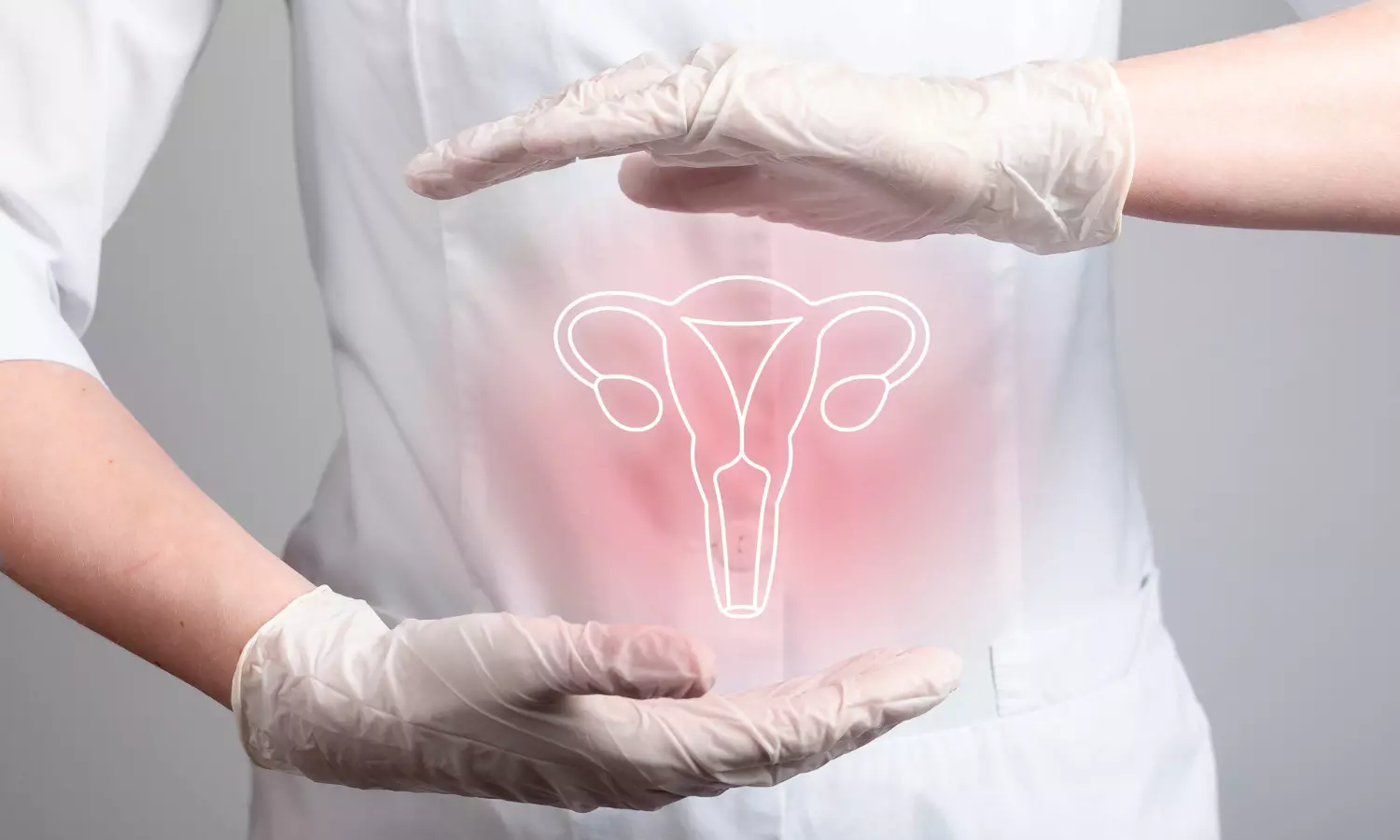
Vaginal infections, often termed “Infectious
Vaginitis,” are common concerns for women across the lifespan, with a
higher prevalence among women of reproductive age. It is the most frequent
reason for women to seek medical attention. Although these infections are not
associated with significant mortality, they are often associated with high
levels of anxiety and have a negative impact on sexual life, self-esteem, and
quality of life. The more prevalent vaginal infections are caused by
disturbances in the natural vaginal microbiome. The normal vagina flora is
characterized by the dominance of lactic acid producing bacteria, especially
Lactobacillus spp., which help to maintain an acidic pH of vaginal fluids
within the range of 3.5-4.5. Along with lactobacilli, a healthy, acidic
premenopausal vagina also contains a heterogeneous mixture of Gardnerella
vaginalis, Escherichia coli, group B streptococcus (GBS), genital Mycoplasma
species, Candida albicans, and other species.
The most commonly documented cause of vaginitis is bacterial
vaginosis (BV). BV is characterized by a dramatic switch of vaginal bacterial
flora from normal predominant Lactobacilli to a polymicrobial flora. Vulvovaginal
candidiasis (VVC) is the second most common vaginal infection, while trichomoniasis,
caused by Trichomonas vaginalis, is the most common non-viral sexually
transmitted infection. True mixed infection rarely occurs in women with
vaginitis, but coinfection occurs much more frequently. Coinfection with
Candida species is observed in about 20%-30% of women with BV. The coinfection
rates of BV pathogens and trichomoniasis are even more prevalent. Other
etiologies of vaginitis include vulvar skin diseases, desquamative inflammatory
vaginitis, and genitourinary syndrome of menopause.
Despite the availability of numerous oral, topical, and
intravaginal medications for the treatment of vaginal infections, their
management remains challenging. Associated side effects, development of
resistance, lack of prevention and destruction of biofilms, and higher
recurrences are the limitations of currently available conventional therapies.
Ineffectiveness due to poor penetration and rapid removal from the vaginal
canal are the major hurdles in achieving infection cure with local
antimicrobial therapies. There is a need to develop newer therapeutic options
for treating vaginal infections that overcomes the limitations of current
therapies.
During the last decades, nanotechnologies-based
formulations, such as nanoparticles, have been explored to overcome the
limitations of current therapies for vaginal infections. These novel
formulations can improve local drug delivery, biodistribution, retention, and
uptake in vulvovaginal tissues. Other important benefits nanotechnology-based
formulations offer are reduced toxicity, enhanced patient compliance, and
improved treatment outcomes.
The study by Dani, Godbole and Mehta evaluated the efficacy
and safety of colloidal nano silver gel (SilverSol® Vagigel) (A patented
technology from American Biotech Labs, USA) in combination with 0.2% lactic
acid in the female subjects for the treatment of vaginal infections.
This study was a multicenter, randomized, double-blind,
placebo-controlled pilot study in which post-menarchal female subjects between
18 and 65 years of age clinically diagnosed with bacterial vaginosis and
vulvovaginal candidiasis were enrolled. The participants were randomized to
receive treatment with SilverSol® Vagigel or placebo (vehicle) gel (both
treatments as one 4 gm application inserted into the vagina with an applicator
device, once daily at bedtime for internal use and 2 gm gel for local
application to the vulva and vagina for external use twice daily for a period
of 14 days). The primary endpoint evaluated was the proportion of subjects
achieving clinical cure. The secondary endpoint was the proportion of subjects
achieving microbiological cure at the end of the study visit.
A total of 57 subjects were randomized in the study out of
which 38 subjects were randomized in SilverSol® Vagigel arm and 19 subjects
were randomized in placebo arm. SilverSol® Vagigel significantly improved cure
rates of vaginal infections compared to placebo.
The proportion of subjects achieving clinical cure of
vaginal infections was higher i.e., 33 (86.84%) subjects in SilverSol® Vagigel
arm compared to 07 (41.18%) subjects in Placebo gel arm (p-value: 0.0009).
The clinical cure rate with SilverSol® Vagigel was 81.82%
(P=0.1758) for bacterial vaginosis and 92.59% (P=0.0010) for vulvovaginal
candidiasis patients at the end of the study.
Overall SilverSol® Vagigel treatment resulted in a
significantly higher microbial cure of vaginal infections (P=0.0028) compared
to placebo, with a microbial cure rate of 100% for bacterial vaginosis
(P=0.0330) and 85.19% for vulvovaginal candidiasis (P=0.0097).
No adverse events were reported in subjects treated with
SilverSol® Vagigel.
In this study, SilverSol® Vagigel was effective and safe in
treating the most common vaginal infections i.e. bacterial vaginosis and
vulvovaginal candidiasis. Overall, the findings of this study, combined with
the existing body of evidence, indicate that SilverSol® Vagigel may represent a
valuable addition to the armamentarium of available therapies for vaginal
infections, offering potential benefits for patients in terms of improved
outcomes and reduced side effects. Overall, SilverSol Vagigel represents an
excellent advancement in women’s health, offering a highly effective and safe
solution for treating vaginal infections. Leveraging the exceptional antibacterial,
antiviral, antifungal, andimmune-enhancing properties of SilverSol®, SilverSol®
Vagigel formulation can emerge as a promising therapeutic option for treating a
wide range of vaginal infections and delivering unparalleled safety and
efficacy in addressing diverse feminine health concerns.
Source: Dani, Godbole and Mehta / Indian Journal of
Obstetrics and Gynecology Research 2024;11(1):83–89;
https://doi.org/10.18231/j.ijogr.2024.015
Powered by WPeMatico
